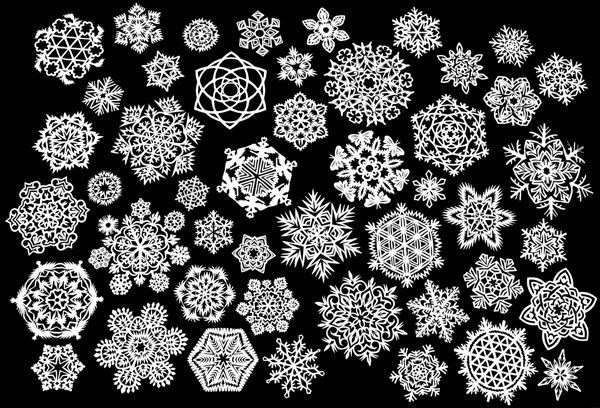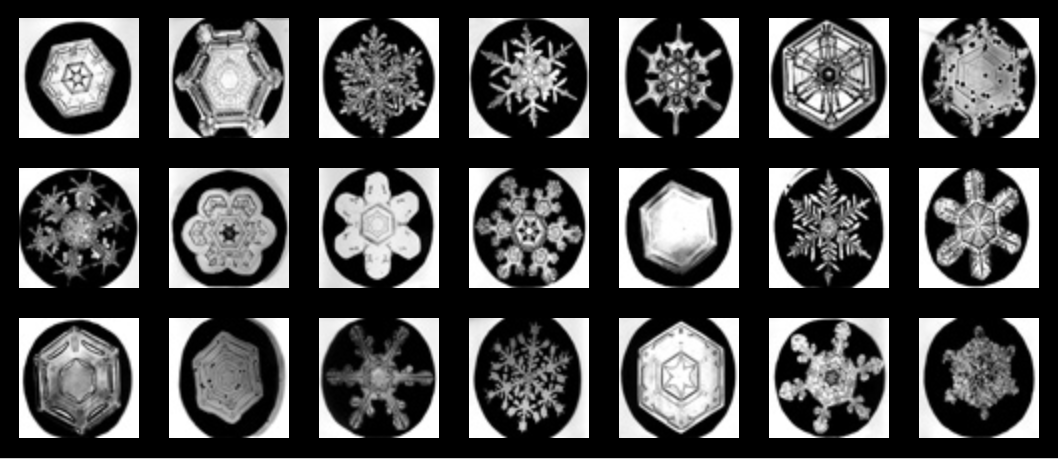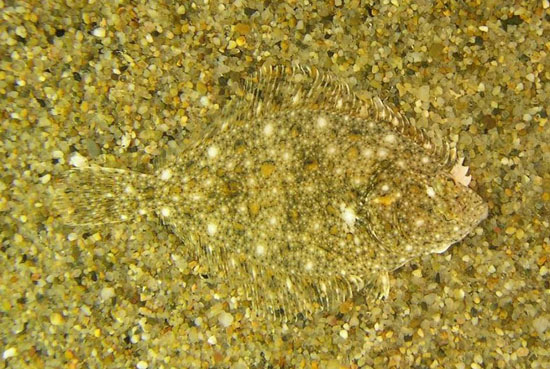Paper snowflakes:

Water (real) snowflakes:

Even though the two sets of snowflakes share similar hexagonal patterns, and even though we could envision paper snowflakes having exactly the shapes of those found by Wilson “snowflake” Bentley, paper snowflakes would be regarded as designed even though they share the same pattern as those that arise via natural process.
The Hexagonal structure of real snowflakes is expected, even though each pattern is unique. Whereas such patterns are not expected to form spontaneously from paper. The way we determine a paper snowflake is designed (apart from actually seeing the human designer in action) is that the paper snowflake conforms to an independent pattern and is improbable from the behavior of paper left to itself or non-intelligent processes.
Repetitive patterns in nature capture our attention, but the reason the repetitive patterns in biology suggest design is that the materials that make biological organisms are inherently materials that tend to spontaneously disorganize. Hence, living things stand out not because they are replicators, but because they are replicators made of materials that would ordinarily resist replication.
Jason Rosenhouse complained and complained IDists can’t identify independent specifications to use for biology. He said ID techniques should work well for man-made designs but not for God-made designs. That was a biting criticism, and I resolved to find ways to counter. The first independent specification I found was in homochirality. See: Illustrating Embedded Specifcations and Specified Improbability. I continue to look for ways to construct other kinds of independent specifications.
The easiest independent specifications involve improbable duplication (like paper snowflakes). Below are some designs made by a non-human intelligence or possibly natural selection or both. I concede natural selection is a possibility in the following cases (one of the few times I will ever suggest this), but whether it is God-made or selection made, I have a hard time saying it doesn’t look designed.
Now the reason I don’t totally rule out selection in this case is that at least with respect to color, the idea is not outrageous. Some of the other details, however, it is hard for me to think selection could have such a level of specificity.
But, these are examples I would consider as at least looking designed for similar reasons we know paper snowflakes are designed. And it is also formally possible the Designer did have minor roles for natural selection to help make such camouflage (as Blyth, the creationist pioneer of Natural Selection would argue). To the degree selection was involved, then these are cases where we can say the object is designed and selection had a role. Of course, since I think all life started by ID, I obviously think in the ultimate sense these creatures below are intelligently designed. This is one of the few cases that I would still say an object is intelligently designed but where the designer may have used selection as a mechanism of manufacture. Why should this be outrageous? Engineers use genetic algorithms to engineer, don’t they?
From the definition of the EF, I don’t have a lot of problem arguing the following mimics are designed even if selection might have had some role in optimizing the design.
Leaf Insect:

Camouflaged Fish:

Camoflaged Spider

Photo credits:
Wilson “snowflake” Bentley and Pretty Snowflakes and Nature is Awesome